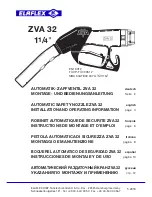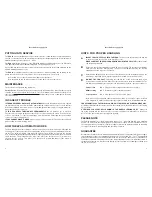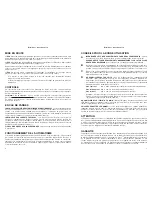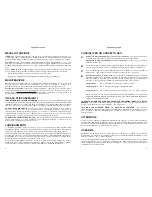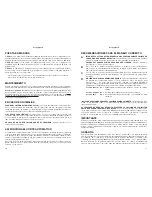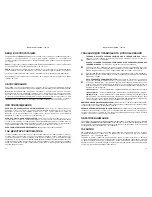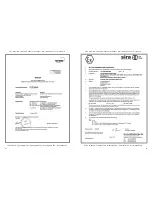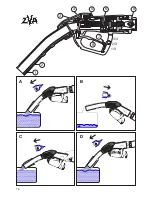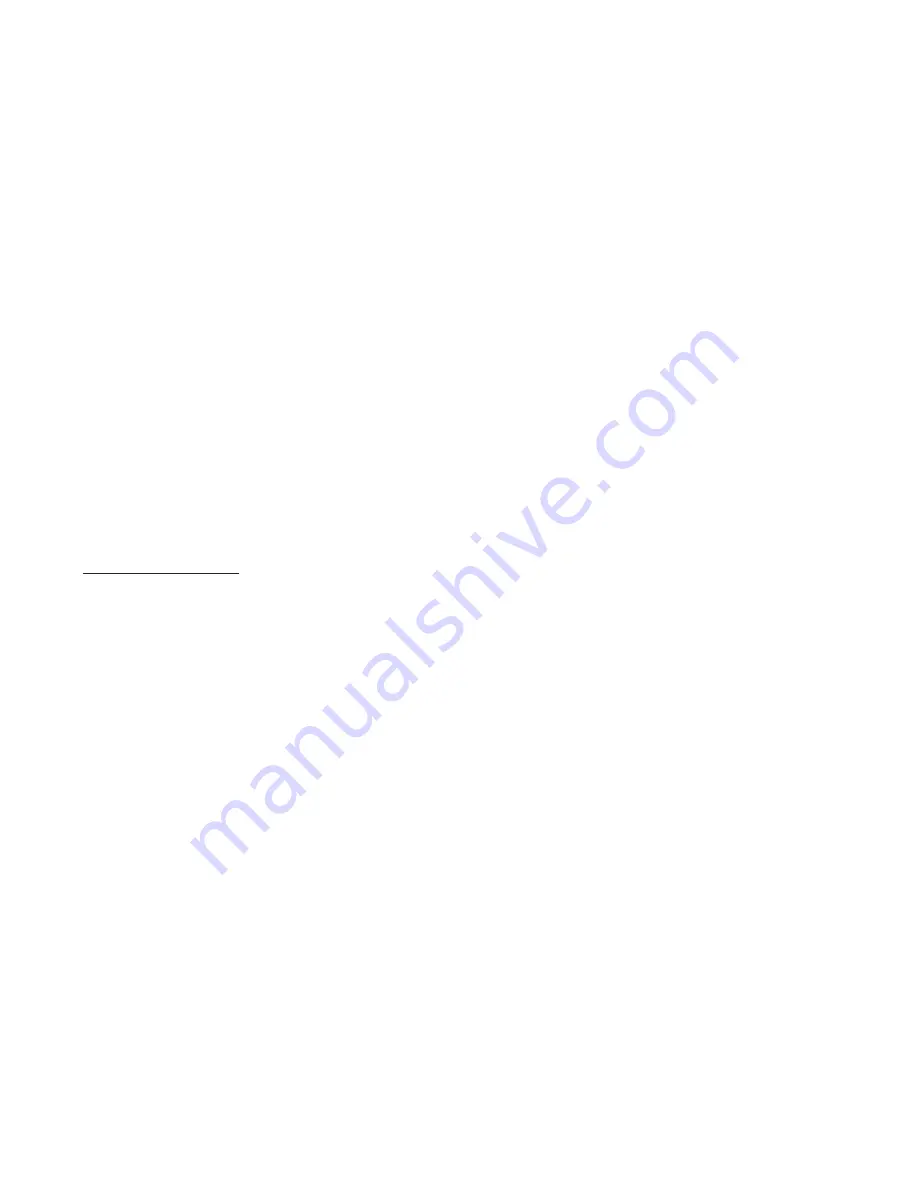
5
HINTS FOR PROPER HANDLING
INSERT THE SPOUT FULLY INTO THE TANK
. The ball of the safety valve rolls forward
to open the safety cut out. This is the best way to fuel.
MAKE SURE THAT THE ZVA IS HOOKED FIRMLY INTO THE FILL PIPE
so that it cannot
slip out during refuelling.
With some near horizontal fill pipes version
A
is not possible. The safety cut-out attitude
valve prevents the valve from opening. The ball rolls backwards blocking the sensing
path and the nozzle trips off continuously.
With situation
B
lift and hold the nozzle so that the ball now rolls forward opening up the
air passage. Refuelling is now possible provided the nozzle is kept in this position.
DO NOT FILL TOO FAST
: Splashing fuel can trip the nozzle before the tank is full.
Some filler necks are difficult to refuel. Fuel at lower speeds to avoid fuel blow backs. The
flowrate can be adapted to the capacity of the filler neck by the three - speed lever latch ( 7 ).
First position
3/3 =
Fully opened for straight and near vertical fill pipes
Middle setting
2/3 =
Reduced output for narrower fill pipes
Lower position
1/3 =
Slow position for poorly vented pipes
Note
: when the lever is pulled slightly only the pilot valve of the ZVA 32 opens - flowrate
up to 60 litres/min. Further pulling of the lever opens the main valve for maximum flowrate.
THE AUTOMATIC SHUT OFF WILL ALSO WORK IF THE LEVER IS HELD OPEN MANUALLY,
according to EN 13012. Once the fuel touches the sensing port (1) the automatic cuts off. Topping
up is possible.
A FEW DROPS OF FUEL WILL REMAIN IN THE NOZZLE SENSING PORT
. Always tilt
the nozzle forward into the tank to drain for a few moments before returning it to the nozzle
boot. Then the next user will not be surprised by drips.
PLEASE NOTE
The ZVA 32 is approved for fuels in a pressure range of 1,5 - 6 bar and flowrate up to 200 litre/
minute. The ZVA opens automatically when the pressure exceeds 6 bar. If it is intended to use it
for other applications you should consult your supplier who will be pleased to advise its suitability
on receipt of full details, including fluid, and operating conditions.
GUARANTEE
We guarantee against defective materials and manufacturing up to 18 months from date of supply.
If the delivery date cannot be established, the date code on the nozzle (e.g.
·
18 = 1
st
quarter 2018)
prevails. Excluded are nozzles and parts subjected to wear and tear, abuse and to contamination.
Furthermore excluded are damages by misuse, indirect damages and costs, travelling related to
exchange and repair work. We refuse any liability for consequential loss or damage resulting from
the use of our nozzle.
A
B
C
D
Description see page 16
4
PUTTING INTO SERVICE
The
ZVA 32
is a fuel-dispensing nozzle for diesel, light fuel oil and aviation fuels. With automatic
shut off, for wet-hose use with electrically operated petrol dispensing pumps for a maximum of
200 litres/minute, pressure range 1,5 - 6 bar.
The
ZVA 32
fulfils the conditions of the European Weights and Measures as well as EN 13012.
TÜV approval and ATEX certificate ( category Ex II 1G ) see pages 14-15.
Each nozzle has been subjected to stringent tests before leaving the factory and validated by the
applied markings and date code.
The
ZVA 32
is supplied ready for connection to the hose. After assembling and switching on the
pump operate the lever ( 9 ) several times to vent air from the hose. Then check :
Is the nozzle, hose connection and swivel tight under pressure?
Does the pump switch off when putting the nozzle back into the nozzle boot?
MAINTENANCE
The nozzle does not require any lubrication.
Safety checks
: Regularly inspect the nozzle visually for damage. Pay attention that the spout
serration secures the nozzle in the filler neck. Test the 'minimum' shut off and the safety cut off
function ( 3 ) during the annual pump maintenance and instantly in case of damages which may
effect the vacuum.
IN CASE OF TROUBLE
IF THE NOZZLE DOES NOT CLOSE AUTOMATICALLY
usually the vacuum required to operate
the automatic action is too low. With the pump running, fully pull the lever ( 9 ) to check that full
flow can be obtained. Also check, if a loose spout, damaged vacuum cap ( 5 ) or clogged strainer ( 8 )
have caused the pressure drop.
IF THE ZVA KEEPS TRIPPING OFF PERMANENTLY
the air passage ( 2 ) is blocked.
First check if it is caused by the ball of the safety cut off, by shaking the nozzle. If the ball is free
to move, it will rattle. To clear the air passage, blow compressed air through the spout until air
comes out of the sensing port ( 1 ).
IF YOU CANNOT MAKE IT WORK
please call your service contractor. They have the skills and
parts needed to restore working order.
HOW THE ZVA AUTOMATIC WORKS
The flow through the nozzle creates a vacuum at the valve seat ( 6 ). Air is drawn in through the
sensing port ( 1 ) at the tip of the spout, through the safety cut-out, past the diaphragm, and into
the fuel. The valve will remain open while the air flows freely. When fuel reaches the sensing
port, a vacuum builds up rapidly until it lifts the diaphragm ( 4 ) and trips the automatic action which
shuts the valve. The mechanism also trips if the ball of the safety cut-out ( 3 ) rolls back to
obstruct the free air flow. This will occur if the spout is pointed upwards or if the nozzle is
dropped onto the ground.
Description see page 16

